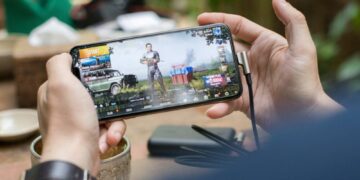
Photo by Marius Masalar on Unsplash
From the way we communicate to the way we interact with each other, technology has undeniably changed the way we live our lives. With the rise of social media, smartphones, and artificial intelligence, our cultural norms are constantly evolving and adapting to these technological advancements. In this article, we will explore how technology is shaping and shifting cultural norms in today’s society. Let’s dive in and see how our world is being transformed by the digital age.
The Rise of Social Media Influencers and Changing Beauty Standards
In today’s digital age, technology plays a significant role in shaping and shifting cultural norms. One prominent example of this phenomenon is the rise of social media influencers and how they have influenced changing beauty standards. These influencers, who have amassed large followings on platforms like Instagram and YouTube, have a powerful impact on the way society perceives beauty.
With the advent of social media, individuals now have access to a wide range of beauty ideals and trends that were once limited to traditional media outlets. This democratization of beauty standards has led to a more inclusive and diverse representation of beauty. Social media influencers have the ability to challenge conventional beauty norms and promote body positivity and self-acceptance. By embracing their unique features and sharing their personal stories, influencers are reshaping the way society views beauty. Technology has allowed for a more fluid and dynamic definition of beauty, empowering individuals to express themselves authentically and embrace their own unique characteristics.
Embracing Diversity Through Online Activism and Representation
In today’s digital age, technology plays a pivotal role in shaping and shifting cultural norms. From social media platforms to online activism, the internet has become a powerful tool for embracing diversity and promoting representation.
Through online activism, individuals can raise awareness about important social issues, advocate for marginalized communities, and spark meaningful conversations about diversity. Social media platforms allow for voices to be heard, stories to be shared, and connections to be made across different cultures and backgrounds. By utilizing technology in this way, we can create a more inclusive and equitable society where everyone feels valued and represented.
Navigating Online Dating Culture and Relationship Dynamics
In today’s digital age, technology plays a significant role in shaping and shifting cultural norms, especially in the realm of online dating and relationship dynamics. With the rise of dating apps and social media platforms, the way we interact, communicate, and form relationships has drastically evolved.
One of the key ways technology has influenced dating culture is by providing a convenient avenue for people to connect with others from all around the world. Through dating apps like Tinder, Bumble, and Hinge, individuals now have the ability to meet potential partners with just a swipe of a finger. This ease of access has not only expanded the dating pool, but it has also changed the way we approach and navigate relationships. Furthermore, social media platforms have also played a significant role in shaping relationship dynamics by allowing individuals to showcase their lives and relationships online, influencing how we perceive and interact with one another.
In addition, technology has also brought about new relationship dynamics, such as the rise of long-distance relationships and online communication. With the help of video calls, messaging apps, and social media platforms, couples are able to stay connected and maintain their relationships despite physical distance. These technological advancements have allowed for more flexibility and creativity in how we approach and maintain relationships, ultimately reshaping traditional relationship norms.
The Impact of Virtual Reality on Tourism and Globalization
Virtual reality has revolutionized the way we experience and interact with the world around us. In the realm of tourism, this technology has opened up endless possibilities for travelers to explore new destinations from the comfort of their own homes. Through immersive virtual tours, users can now visit famous landmarks, historical sites, and exotic locations with just a click of a button. This shift in how we consume travel content has not only impacted the tourism industry but has also played a significant role in shaping cultural norms and perceptions.
One of the key ways in which virtual reality is influencing cultural norms is by breaking down barriers and connecting people from different parts of the world. Through virtual reality experiences, individuals can engage with diverse cultures, traditions, and customs in a way that was never before possible. This increased exposure to global perspectives fosters a greater understanding and appreciation for cultural diversity, ultimately promoting unity and acceptance on a global scale. With the rise of virtual reality in tourism, the world is becoming more interconnected than ever before, blurring the lines between borders and fostering a sense of shared humanity.
Insights and Conclusions
As we navigate the ever-evolving landscape of technology and culture, it’s clear that the two are intricately intertwined, constantly shaping and shifting one another. From the way we communicate to the way we express ourselves, technology has undeniably left its mark on our cultural norms. As we look to the future, it’s essential that we continue to question and challenge these norms, ensuring that they align with our values and beliefs. So, let’s embrace the power of technology to spark conversations, challenge traditions, and ultimately, shape a more inclusive and dynamic cultural landscape for generations to come. Let’s keep pushing boundaries and exploring the endless possibilities that lie ahead. The future is ours to shape – let’s make it a bright and diverse one.









































